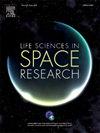Gravity has had a significant impact on the evolution of life on Earth with organisms developing necessary biological adaptations over billions of years to counter this ever-existing force. There has been an exponential increase in experiments using real and simulated gravity environments in the recent years. Although an understanding followed by discovery of counter measures to negate diminished gravity in space had been the driving force of research initially, there has since been a phenomenal leap wherein a force unearthly as microgravity is beginning to show promising potential. The current review summarizes pathophysiological changes that occur in multiple aspects of the cardiovascular system when exposed to an altered gravity environment leading to cardiovascular deconditioning and orthostatic intolerance. Gravity influences not just the complex multicellular systems but even the survival of organisms at the molecular level by intervening fundamental cellular processes, directly affecting those linked to actin and microtubule organization via mechano-transduction pathways. The reach of gravity ranges from cytoskeletal rearrangement that regulates cell adhesion and migration to intracellular dynamics that dictate cell fate commitment and differentiation. An understanding that microgravity itself is not present on Earth propels the scope of simulated gravity conditions to be a unique and useful environment that could be explored for enhancing the potential of stem cells for a wide range of applications as has been highlighted here.


